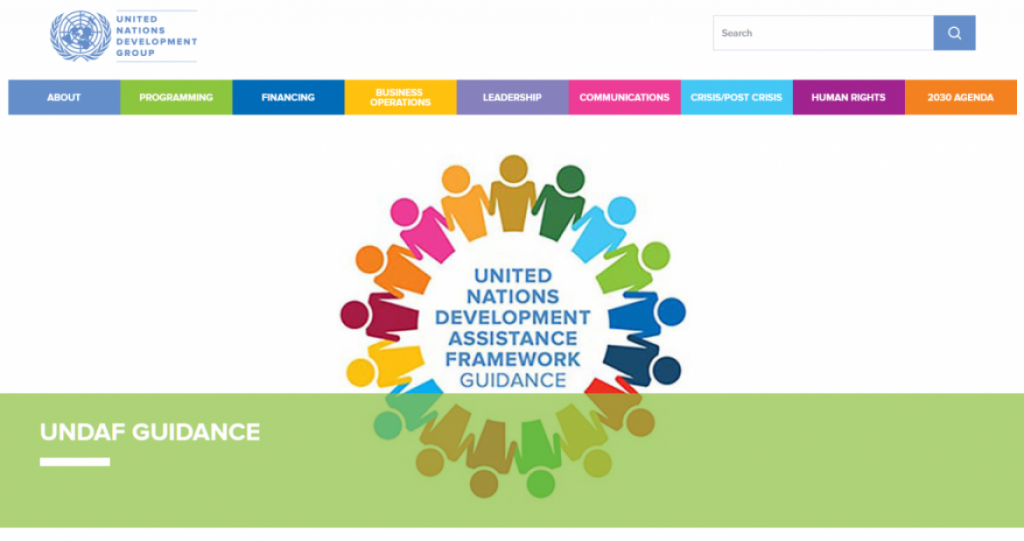
As you will know, the new guidance for UN Development Assistance Frameworks (UNDAF) is here! Web-based with nice layout at https://undg.org/programme/undaf-guidance/
Not sure what you think about the new UNDAF guidelines, but here are some of my thoughts after an initial review:
Despite the positive change in how the guidelines, annexes and companion guidance are presented, this appears more of an evolutionary update rather than a ‘SDG revolution’. True, the guidelines include a clearer focus on the SDGs (good!), but I do not really see any radical departure from how the UN has done business in the past. Links to the SDGs in the results framework remain tentative at best. The new UNDAF guidelines have clearly taken on some of the features of One UN, but most of the prescriptive, practical guidance remains similar to the 2014 UNDAF updates.
Having said that, there are some really positive changes in the new guidelines, in my view. For example:
- The central role of Leave No One Behind for everything the UN does, which – at last – provides again an overall vision for the entire UN. If taken seriously, this could become a very powerful mobilizer, internally as well as externally.
- The inclusion of a strong theory of change: although a buzzword and very much en vogue, it can indeed help – if properly done – to focus the UN’s work and provide a common framework for working together
- It is a good thing that the Common Country Analysis is now a minimum requirement: This is important since solid theories of change (and the subsequent results chains) require a detailed, logical problem analysis as a first step. Otherwise, they tend to fail.
- It is positive that the UNDG RBM handbook is included as a pillar for the UN’s work. Although not perfect, the RBM handbook provides a common, reasonably clear set of definitions, frameworks and tools to all UN agencies.
- Another step in the right direction is that UNDAF data should, where possible, be publicly accessible (in line with IATA).
However, I feel that the updated UNDAF guidance overall falls short on a number of issues which would have shown that business as usual is not an option. I was particularly surprised by the lack of attention to innovation. Although there is some reference to real time data collection and vague and general support of innovation, this is certainly not the big push to ingrain innovation into the DNA of the UN and to catch up with some of the more advanced techniques for innovation (positive deviance, using big data, testing, Minimum Viable Products, etc). I would especially have expected a stronger push for adaptive programming, which appears to quickly become mainstream in development organizations.
So overall, my personal feeling – after a first read – is that the new guidelines are not as different from the 2014 version as I would have expected and the nice, modern lay-out initially suggests: The guidelines pick up some of the One UN elements (which is good!), provided a bit more clarify and simplified a few things, but overall, my impressions is that resulting new UNDAFs will not look radically different from what we know today – and that the way the UN will cooperate/coordinate at the country office level may not dramatically change.
Has anyone tried to apply the new guidance to an UNDAF formulation? Would love to hear your experiences.